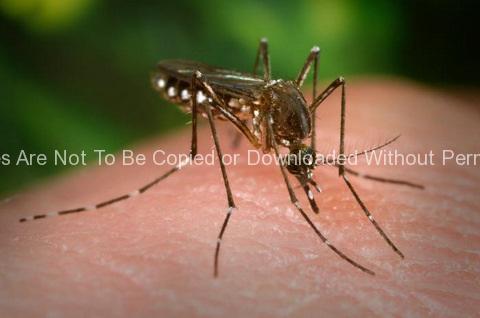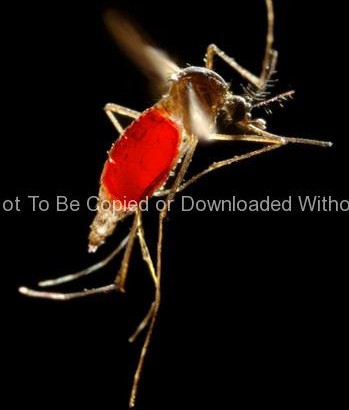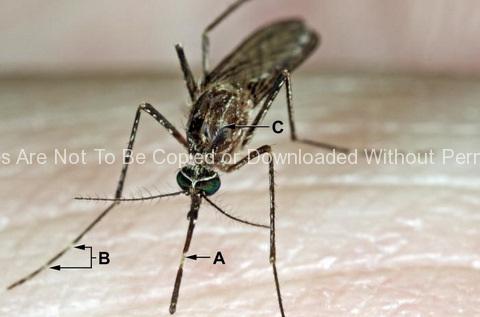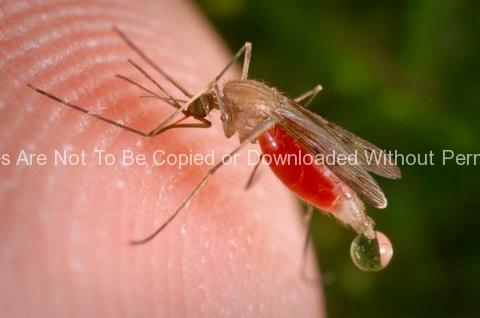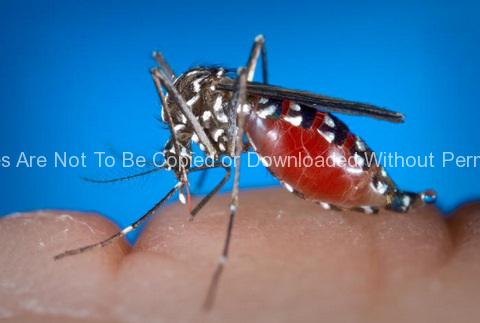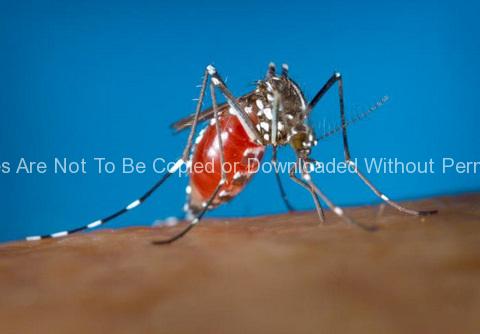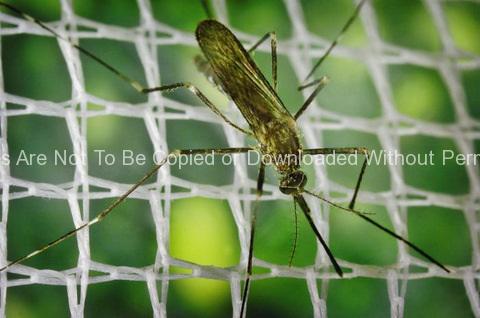This photograph depicted a female Aedes aegypti mosquito as she was in the process of acquiring a blood meal from its human host, after having penetrated the skin surface with the sharply-pointed “fascicle”. Note that her abdomen had become distended as her stomach was filling with her blood meal, and how the proboscis’ labial sheath was in its retracted, pulled back configuration, exposing the inserted, sharp fascicle, which had turned red, as the blood was passing up the straw-like apparatus.
As the primary vector responsible for the transmission of the Flavivirus Dengue (DF), and Dengue hemorrhagic fever (DHF), the day-biting Aedes aegypti mosquito prefers to feed on its human hosts. Ae. aegypti also plays a major role as a vector for another Flavivirus, “Yellow fever”. Frequently found in its tropical environs, the white banded markings on the tarsal segments of its jointed legs, though distinguishing it as Ae. aegypti, are similar to some other mosquito species. Also note the lyre-shaped, silvery-white markings on its thoracic region as well, which is also a determining morphologic identifying characteristic

